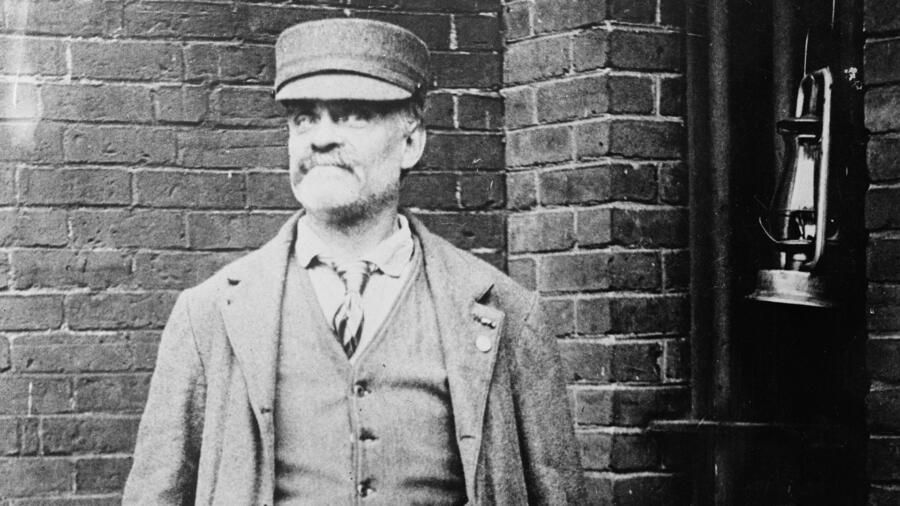In 1870s Boston, terror came not from the shadows—but from a boy. Reports surfaced of children found tied to posts and left battered and bleeding. Some victims were only toddlers. The attacker? A pale boy with one clouded eye and an unnervingly calm demeanor.
Jesse Pomeroy was just 12 when he began tormenting other children. By 14, he had escalated to murder. His case remains one of the most disturbing and perplexing in American true crime history.
What could have driven a child to commit such savagery?
The Boy Behind the Bruises: Jesse Pomeroy’s Early Attacks
In 1871, multiple young boys were discovered bound, beaten, and slashed with knives. Witnesses described being lured away by a slightly older boy who pretended to offer help or ask for assistance.
Eventually, police arrested the unlikely culprit: Jesse Pomeroy, then just 12 years old.
Authorities sent him to a juvenile reform school, where he surprised them with good behavior. He followed every rule and even earned praise for his conduct. Consequently, they released him early—after just 17 months.
Unfortunately, his dark urges had not faded.
Two Missing Children—and a City in Fear
Shortly after his release, 10-year-old Katie Curran disappeared while shopping near her home. Her family searched tirelessly but found no trace of her.
Then, a month later, fishermen discovered the body of 4-year-old Horace Millen near Dorchester Bay. His throat had been slit, and he had suffered multiple stab wounds. The brutality shocked even veteran police officers.
Investigators immediately arrested Jesse Pomeroy.
The Cellar Discovery That Sealed His Fate
While Pomeroy sat in custody, detectives searched his family’s property. In the basement of their store, beneath a mound of ashes and debris, they found Katie Curran’s decomposing body.
Confronted with the evidence, Jesse did not deny the killings. Instead, he offered a chilling explanation:
“I couldn’t help it. Something made me do it.”
That confession stunned the nation. The press dubbed him “The Boy Fiend,” and his story spread across the country.
The Trial That Divided a Nation
By the time Pomeroy stood trial in December 1874, he had become a national sensation. People debated whether he was born evil or created by circumstance.
His defense team argued he suffered from “moral insanity”—a mental disorder that rendered him incapable of resisting his violent urges. They painted a picture of a disturbed boy, not a cold-blooded killer.
However, prosecutors insisted he knew exactly what he was doing. They highlighted how he had hidden evidence, lured his victims, and tried to cover his tracks.
The jury agreed with the prosecution. They found Jesse Pomeroy guilty of murder and sentenced him to death—making him the youngest person in Massachusetts to receive such a punishment.
Solitary for Life: A Fate Worse Than Death?
After fierce public debate, the governor commuted Pomeroy’s death sentence to life in solitary confinement. This unusual punishment placed him alone in a dark cell for the next six decades.
During his confinement, Jesse attempted multiple escapes, wrote dozens of petitions, and even authored a memoir. Despite his efforts, authorities kept him locked away, forgotten by the public.
He died in 1932 at age 72—having spent nearly 60 years in near-total isolation.
What Made Jesse Pomeroy Kill? Unsolved Theories
More than a century later, criminologists and psychologists still speculate about what triggered Jesse’s violent behavior.
Childhood Trauma and Emotional Detachment
As an infant, Jesse suffered a severe reaction to a smallpox vaccination, leaving him covered in sores for months. His mother couldn’t hold or comfort him during that time, possibly damaging his emotional development and ability to bond.
Media Influence and Violent Fantasies
Jesse reportedly read violent “dime novels” obsessively. These stories often glorified kidnapping, torture, and revenge. Some believe they may have fed his dark fantasies and shaped his actions.
Psychological Disorders and Neurological Abnormalities
Modern experts suggest Jesse may have had conduct disorder, psychopathy, or even temporal lobe dysfunction. These conditions can contribute to a lack of empathy, poor impulse control, and a fascination with domination and suffering.
Despite extensive analysis, no single theory fully explains his behavior.
FAQs: Jesse Pomeroy Serial Killer Case
Who was Jesse Pomeroy?
He was a child from Boston who became the youngest convicted serial killer in U.S. history.
How old was he when he committed the murders?
He began torturing children at age 12 and committed two murders by age 14.
What happened during his trial?
He was convicted of murder in 1874 and originally sentenced to death, later commuted to life in solitary confinement.
How long did he stay in prison?
Jesse spent nearly 60 years in solitary confinement and died in prison at age 72.
Was he mentally ill?
Experts and his defense attorneys believed he suffered from mental illness, though a formal diagnosis remains unclear.
Why is this case still remembered?
Because it raises chilling questions about the origins of evil, especially in children, and remains one of the earliest known cases of a juvenile serial killer.

